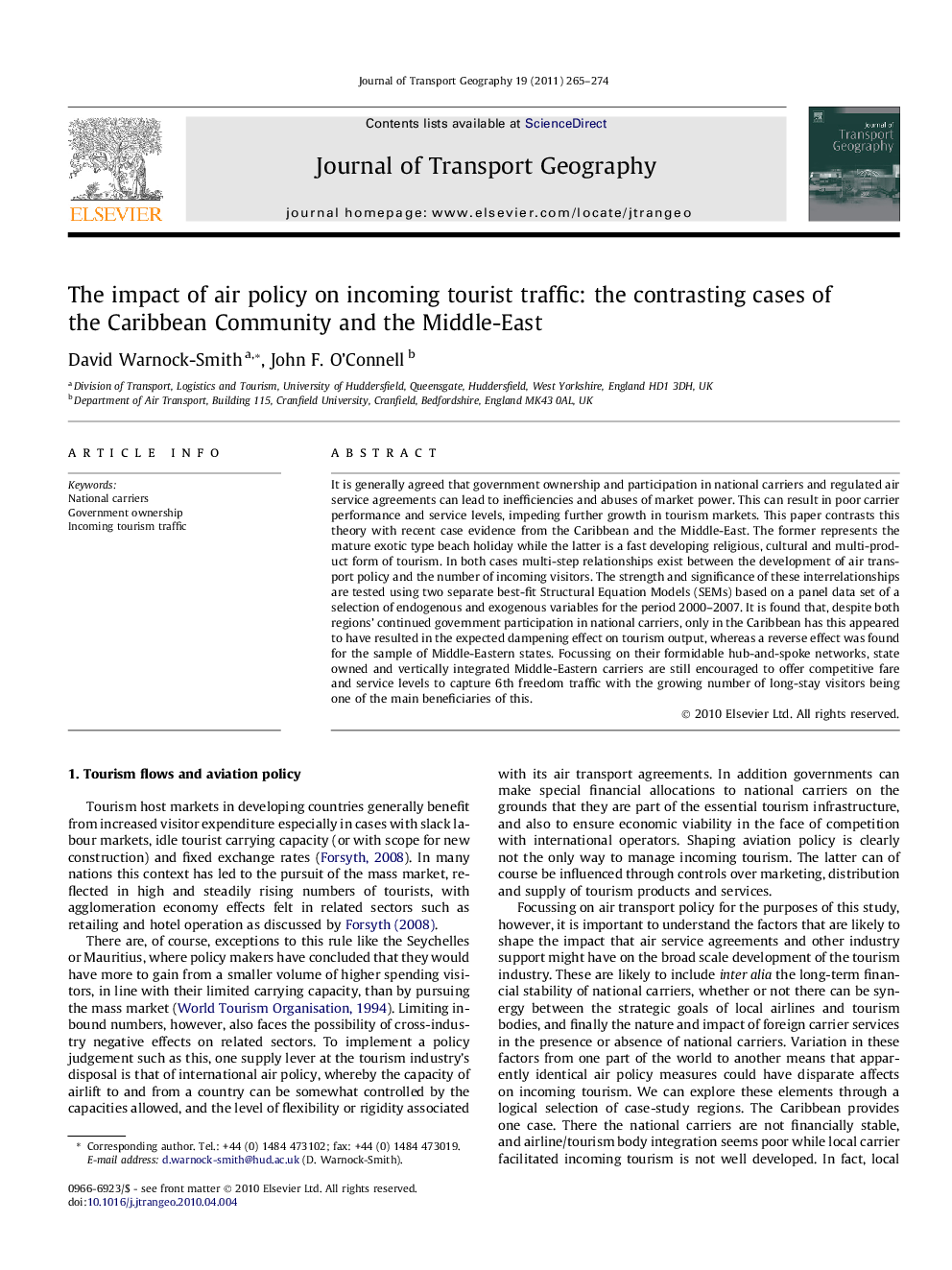| کد مقاله | کد نشریه | سال انتشار | مقاله انگلیسی | نسخه تمام متن |
|---|---|---|---|---|
| 1059630 | 947457 | 2011 | 10 صفحه PDF | دانلود رایگان |

It is generally agreed that government ownership and participation in national carriers and regulated air service agreements can lead to inefficiencies and abuses of market power. This can result in poor carrier performance and service levels, impeding further growth in tourism markets. This paper contrasts this theory with recent case evidence from the Caribbean and the Middle-East. The former represents the mature exotic type beach holiday while the latter is a fast developing religious, cultural and multi-product form of tourism. In both cases multi-step relationships exist between the development of air transport policy and the number of incoming visitors. The strength and significance of these interrelationships are tested using two separate best-fit Structural Equation Models (SEMs) based on a panel data set of a selection of endogenous and exogenous variables for the period 2000–2007. It is found that, despite both regions’ continued government participation in national carriers, only in the Caribbean has this appeared to have resulted in the expected dampening effect on tourism output, whereas a reverse effect was found for the sample of Middle-Eastern states. Focussing on their formidable hub-and-spoke networks, state owned and vertically integrated Middle-Eastern carriers are still encouraged to offer competitive fare and service levels to capture 6th freedom traffic with the growing number of long-stay visitors being one of the main beneficiaries of this.
Journal: Journal of Transport Geography - Volume 19, Issue 2, March 2011, Pages 265–274